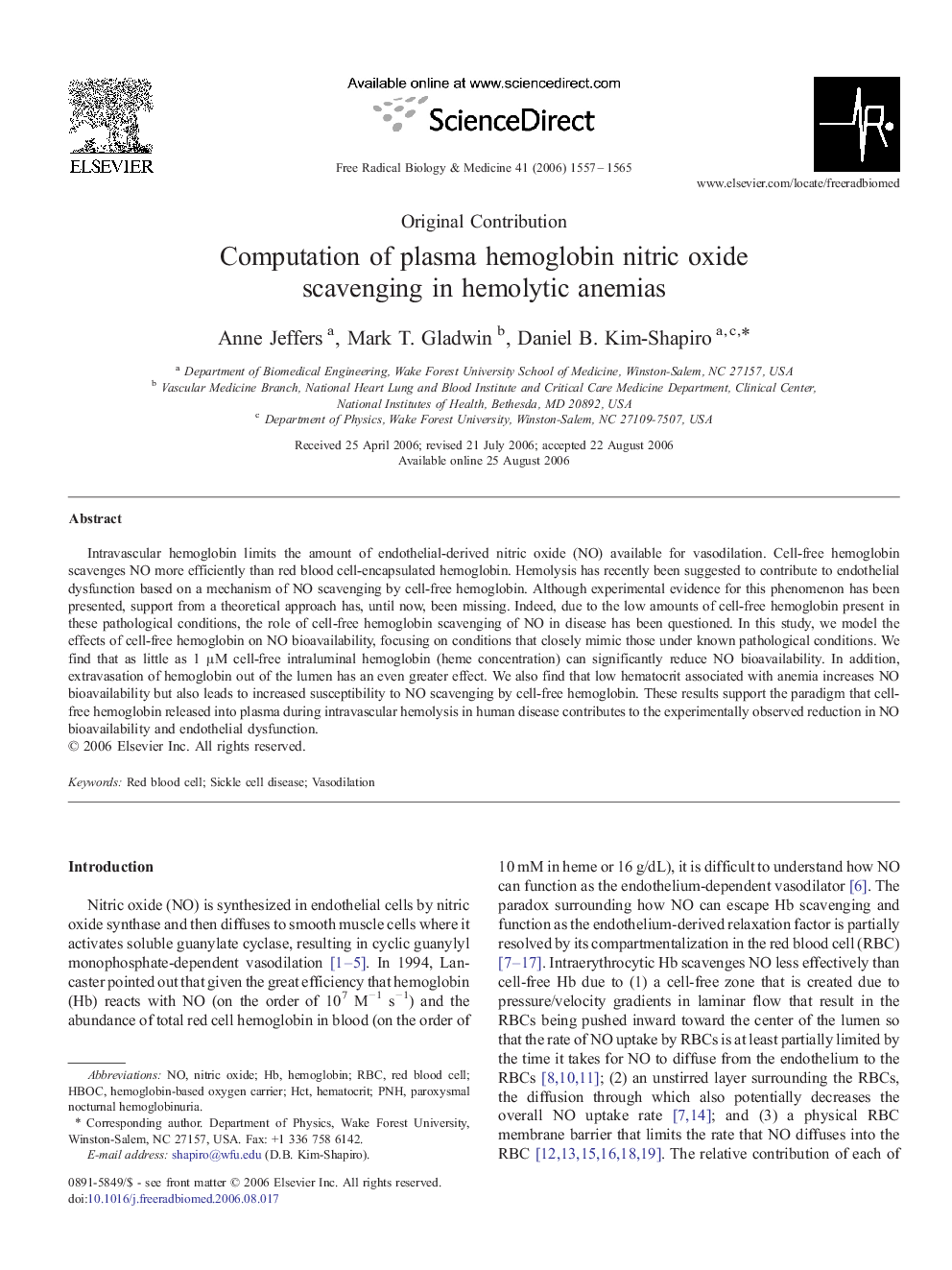| کد مقاله | کد نشریه | سال انتشار | مقاله انگلیسی | نسخه تمام متن |
|---|---|---|---|---|
| 1911010 | 1046797 | 2006 | 9 صفحه PDF | دانلود رایگان |

Intravascular hemoglobin limits the amount of endothelial-derived nitric oxide (NO) available for vasodilation. Cell-free hemoglobin scavenges NO more efficiently than red blood cell-encapsulated hemoglobin. Hemolysis has recently been suggested to contribute to endothelial dysfunction based on a mechanism of NO scavenging by cell-free hemoglobin. Although experimental evidence for this phenomenon has been presented, support from a theoretical approach has, until now, been missing. Indeed, due to the low amounts of cell-free hemoglobin present in these pathological conditions, the role of cell-free hemoglobin scavenging of NO in disease has been questioned. In this study, we model the effects of cell-free hemoglobin on NO bioavailability, focusing on conditions that closely mimic those under known pathological conditions. We find that as little as 1 μM cell-free intraluminal hemoglobin (heme concentration) can significantly reduce NO bioavailability. In addition, extravasation of hemoglobin out of the lumen has an even greater effect. We also find that low hematocrit associated with anemia increases NO bioavailability but also leads to increased susceptibility to NO scavenging by cell-free hemoglobin. These results support the paradigm that cell-free hemoglobin released into plasma during intravascular hemolysis in human disease contributes to the experimentally observed reduction in NO bioavailability and endothelial dysfunction.
Journal: Free Radical Biology and Medicine - Volume 41, Issue 10, 15 November 2006, Pages 1557–1565